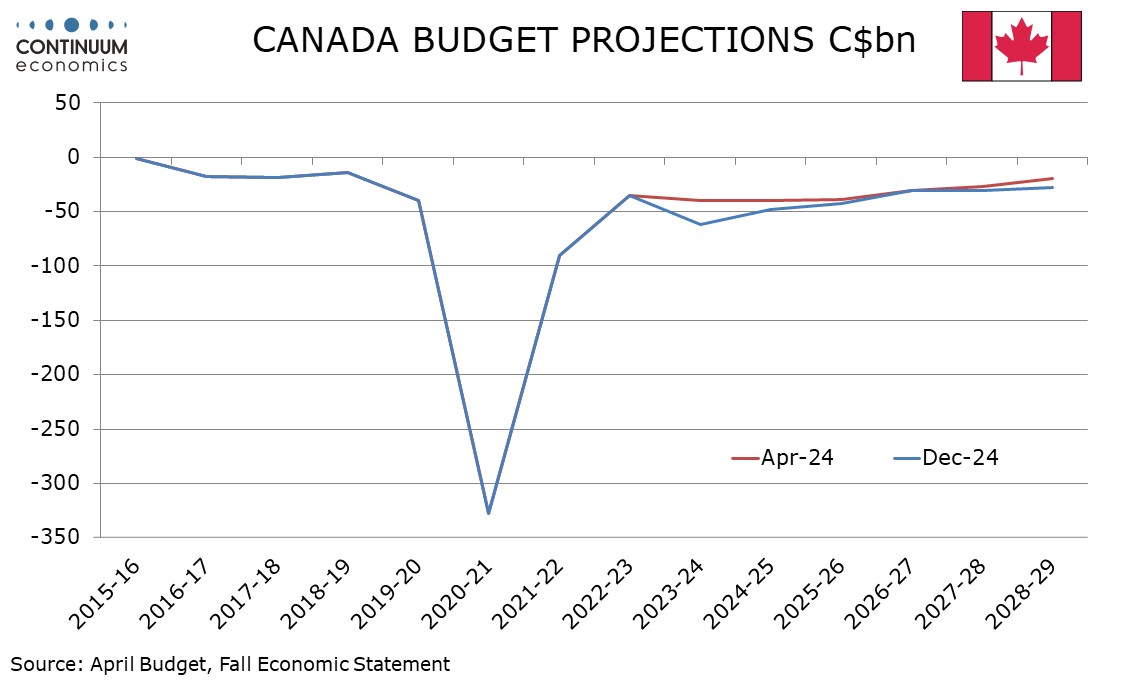Canada Election: Liberal Victory Likely, Stable Policy Expected
Canada’s election takes place on Monday. A victory for the ruling Liberals looks likely, but polls are close enough to mean that a hung parliament or even a majority for the opposition Conservatives, while unlikely, is not to be ruled out. Should the Conservatives spring a surprise, a more conciliatory stance on trade could be seen from US President Trump, but is far from assured.
The Canadian election prospects have been transformed from the start of the year, when the opposition Conservatives, led by Pierre Poilievre, looked assured of a strong majority. The resignation of former Prime Minister Justin Trudeau and his replacement by Mark Carney, coupled with a surge in parotitic sentiment generated by the US trade war, now have the majority of polls showing the Liberals with a narrow lead over the Conservatives, and third party support weak. With the Liberal vote more efficiently distributed, even a tie between the two main parties in votes would probably be enough to give the Liberals the larger number of seats. Still, the polls are close enough to mean that a surprise cannot be ruled out.
A liberal win would mean steady policy and that includes a firm response to Trump’s tariffs. This seems to have paid off so far, with most USMCA-compliant goods not subject to tariffs, though those tariffs that have been imposed, autos in particular, will cause significant pain in Canada. Carney has received praise from his handling of the crisis. Unconfirmed reports have suggested threats to sell USTs led to a more conciliatory tone from Trump, who does not regularly refer to Carney as a governor, implying Canada is or should be the 51st US state, as he did with Carney’s predecessor Trudeau.

Canada’s baseline fiscal position sees a budget deficit of 1.5% of GDP in 2025-26 falling to 0.8% in 2028-29, though the Liberal platform does assume extra spending, led by capital spending, pushing the respective deficits to 2.0% and 1.4% of GDP, while suggesting dynamic effects from these investments could push the deficit below 1.0% of GDP by 2028-29. The optimism is not very convincing, with significant savings assumed from increased government productivity, and the trade war suggesting downside risk to growth. However, the projected deficits are modest enough relative to most other developed nations that some overshoot would not cause much alarm.
The Conservative platform promises lower budget deficits than under the Liberals, but plenty of promises to cut taxes and few clear details for lower spending means promises of lower budget deficits are even less convincing than those coming from the Liberals. Some however would argue that lower taxes would better address Canada’s persistent weakness in productivity better than the Liberal investment proposals. However the performance of the economy would probably be fairly similar under either party, and would probably need some fiscal support given the damage being done by US tariffs.
The key issue is out of Canadian hands, and in those of US President Trump. It is possible that Trump would be more conciliatory with a Conservative government, though for Trump to remove restrictions on Canadian made autos would be a major climb down from him, and with Trump now acting less aggressively against Canada than is the case towards most nations, the ability of Conservative leader Poilievre to deliver a dramatically better deal than would be possible under Carney is moderate.